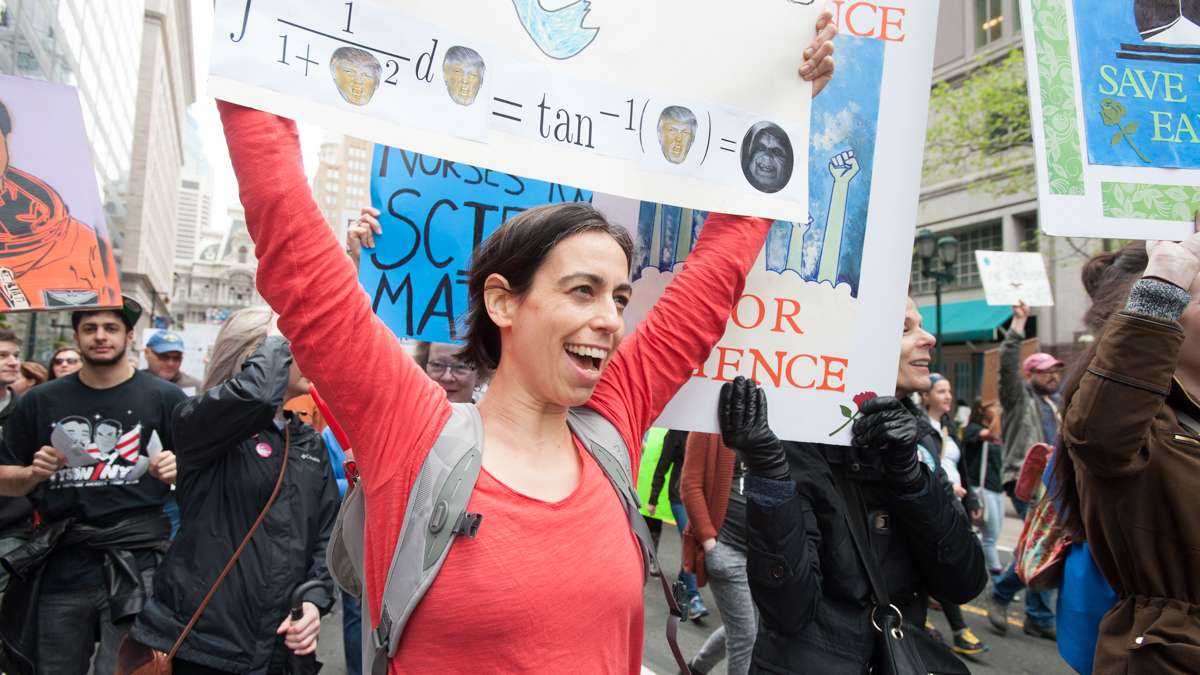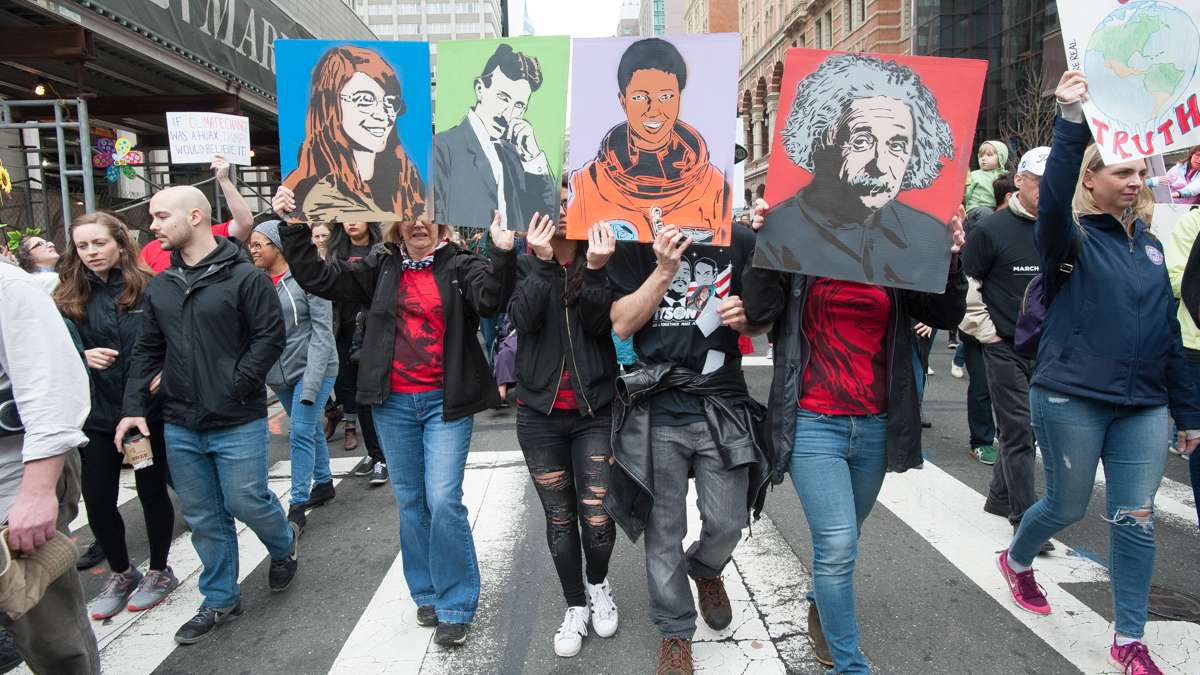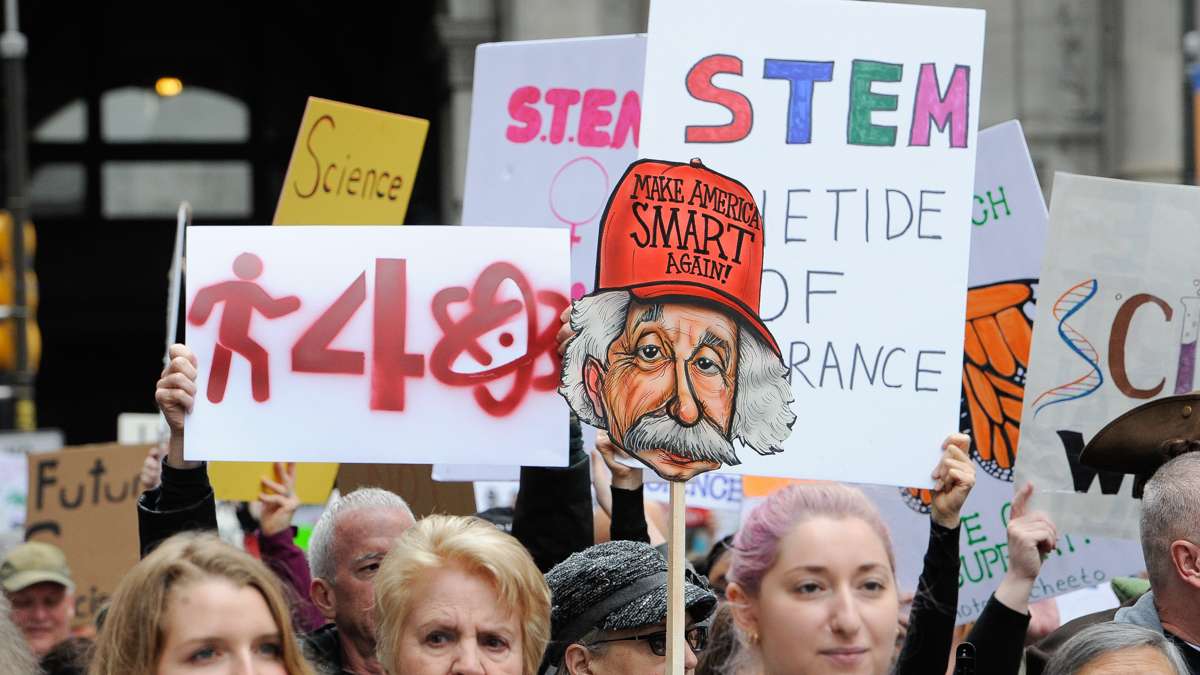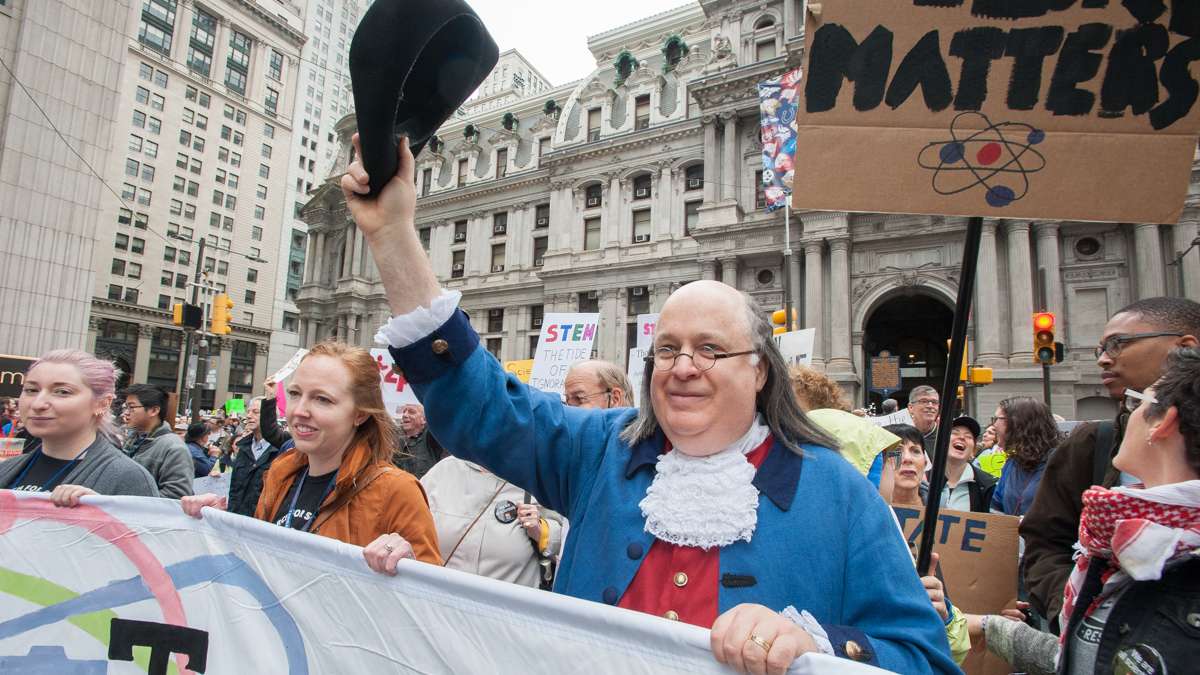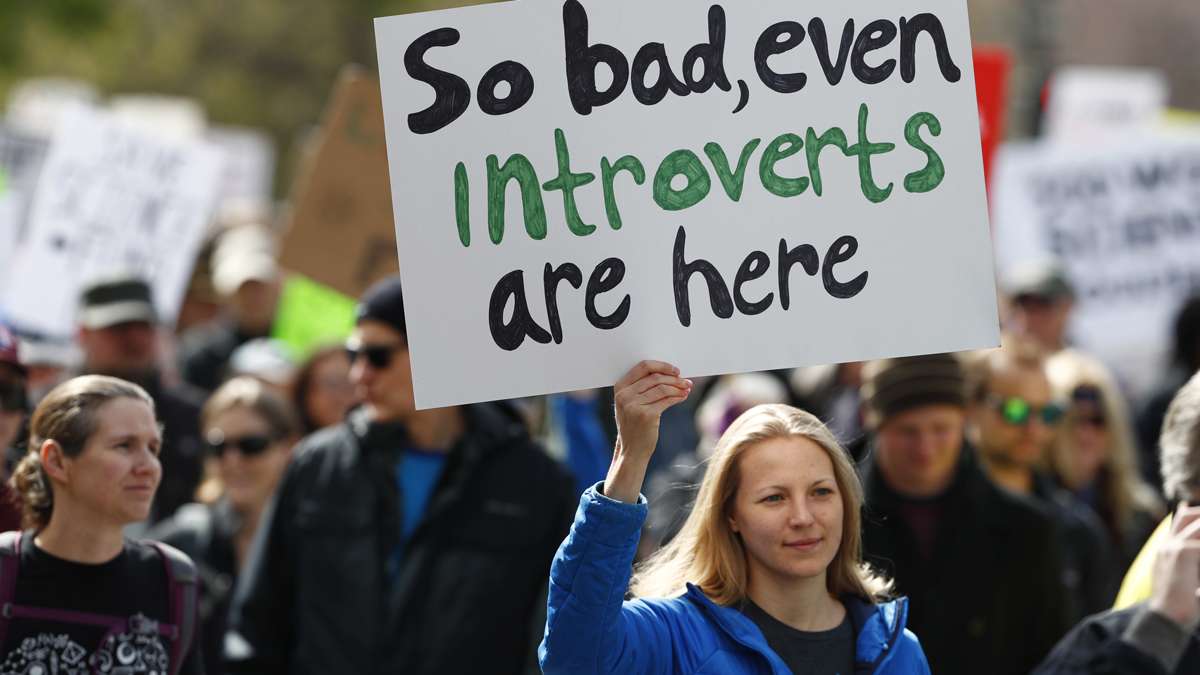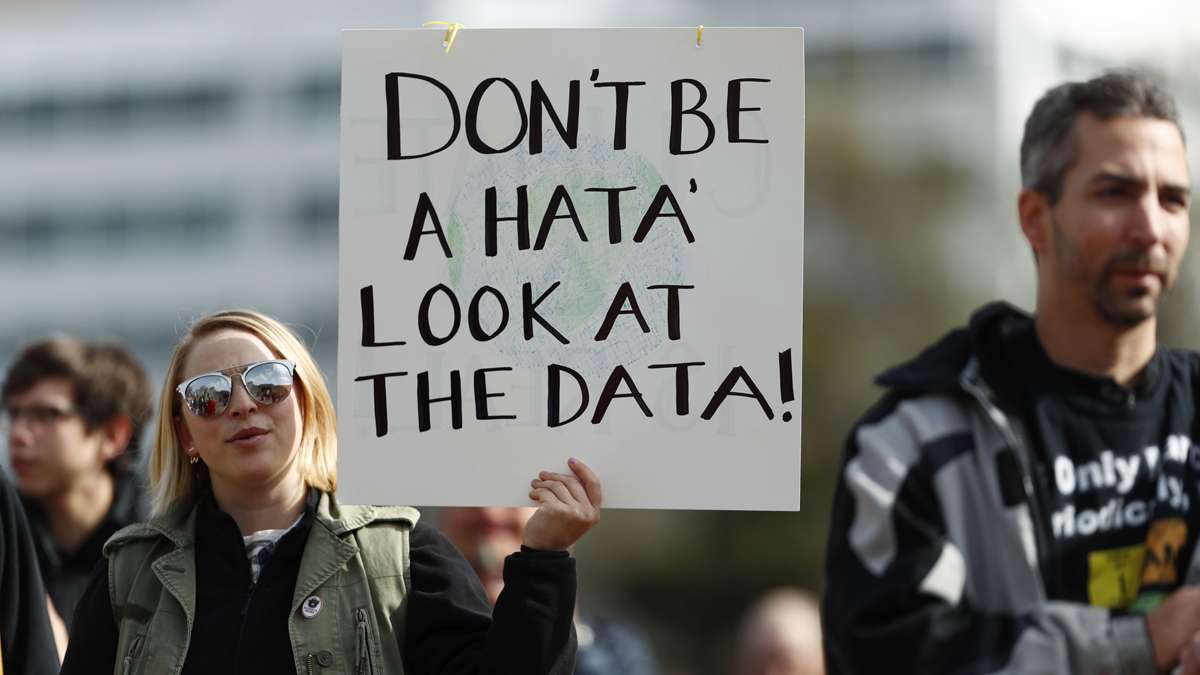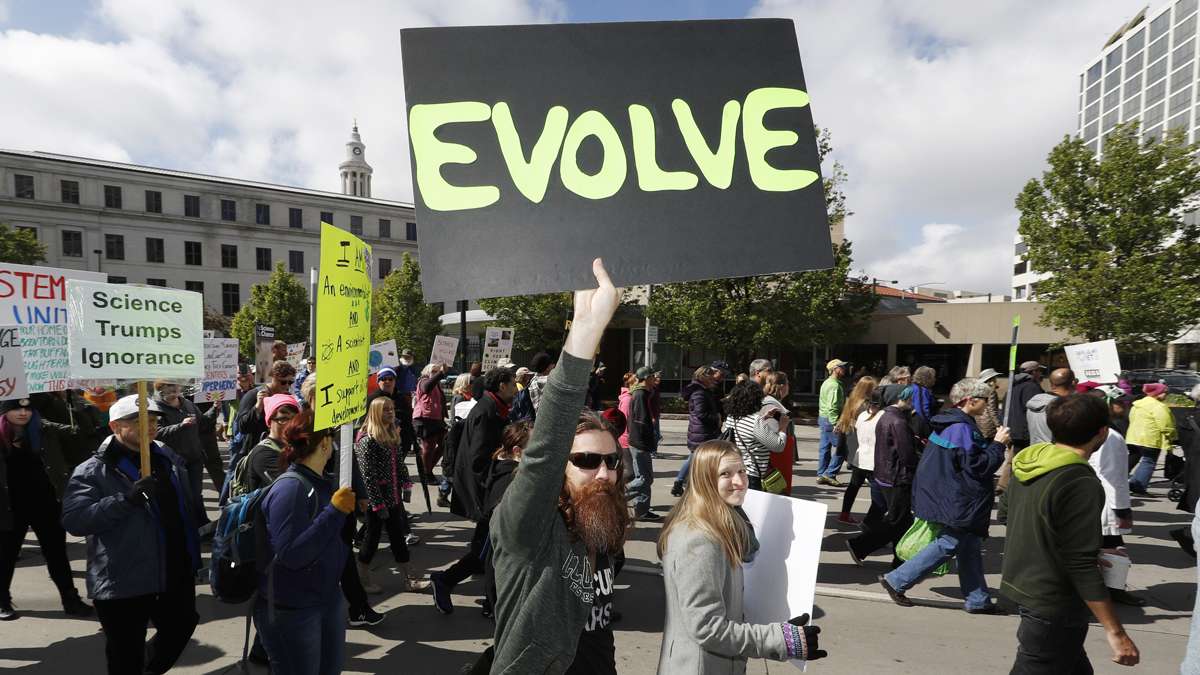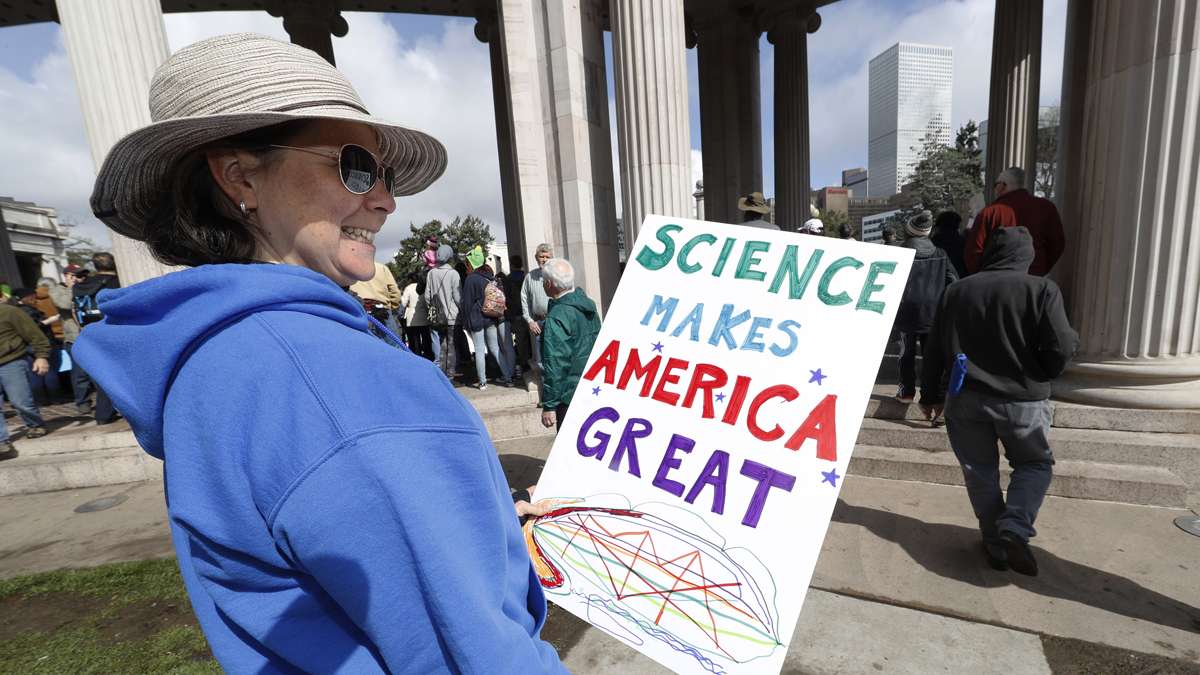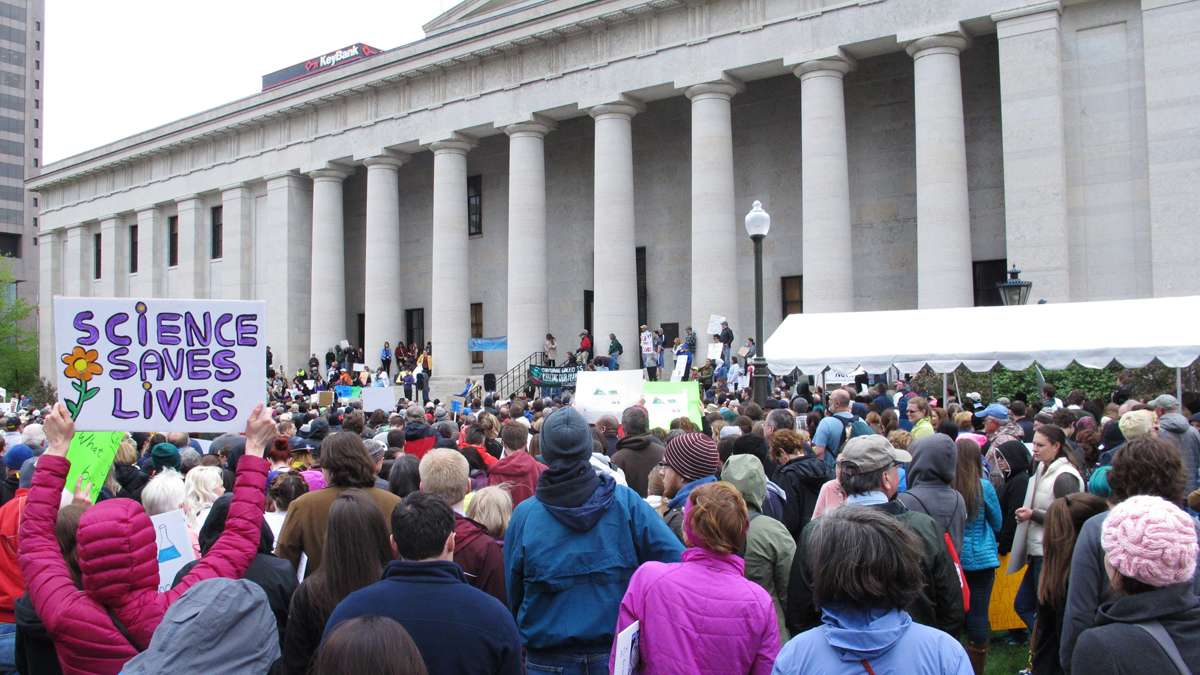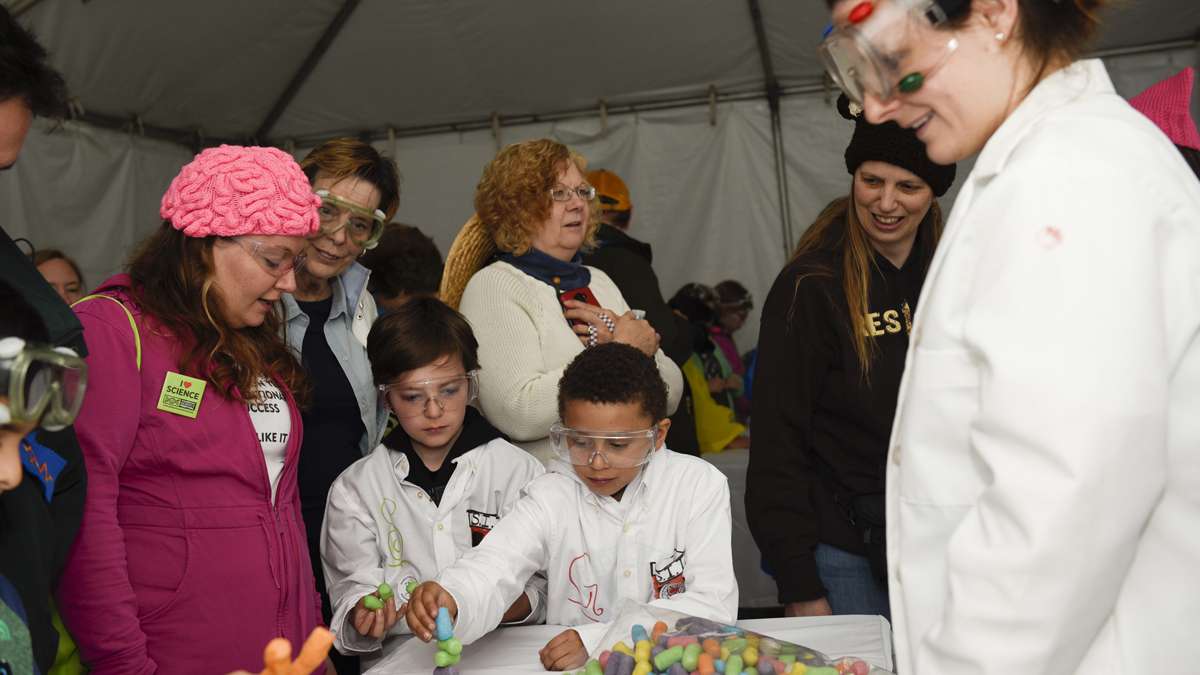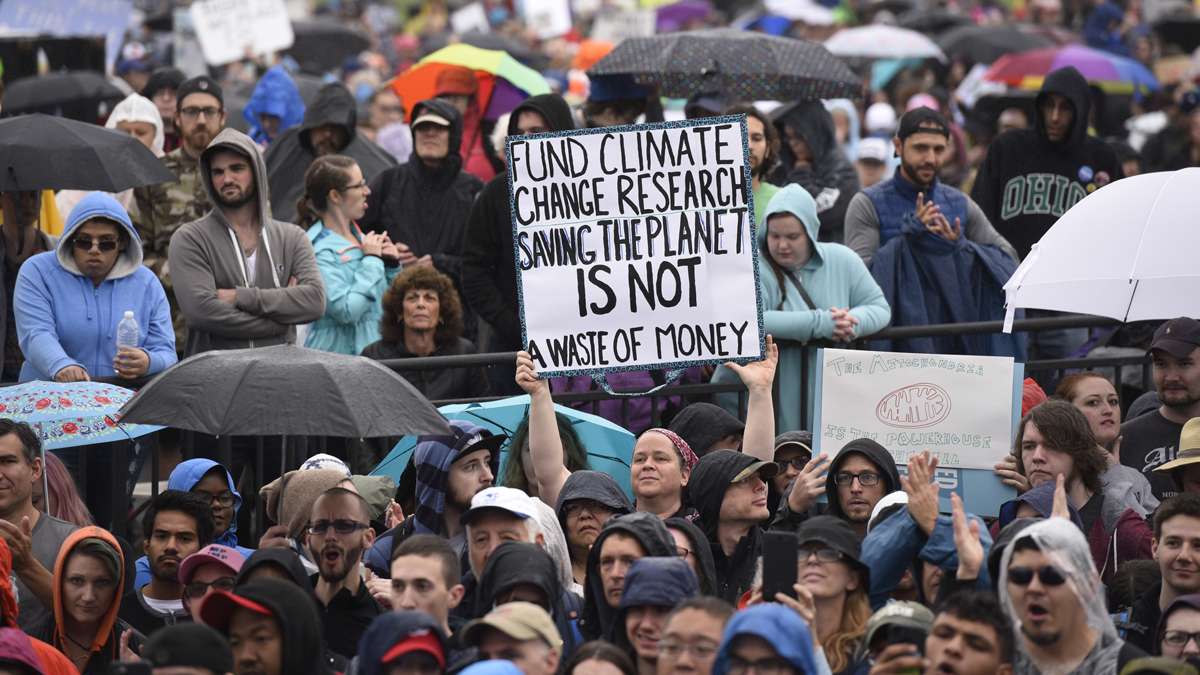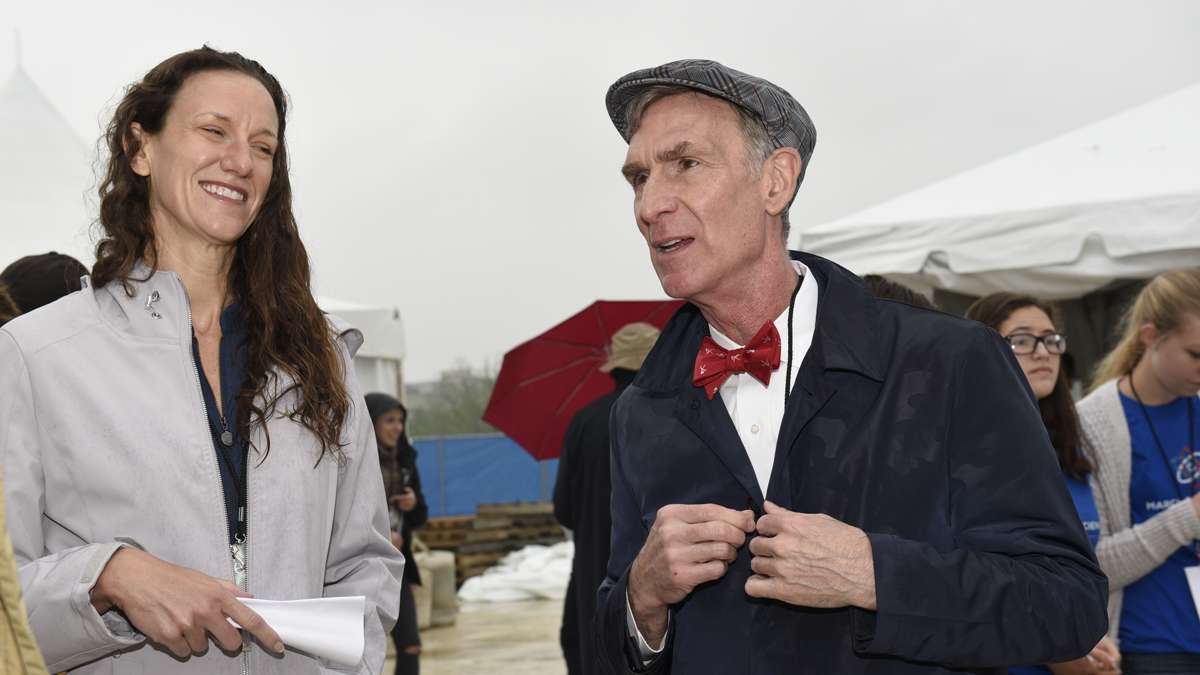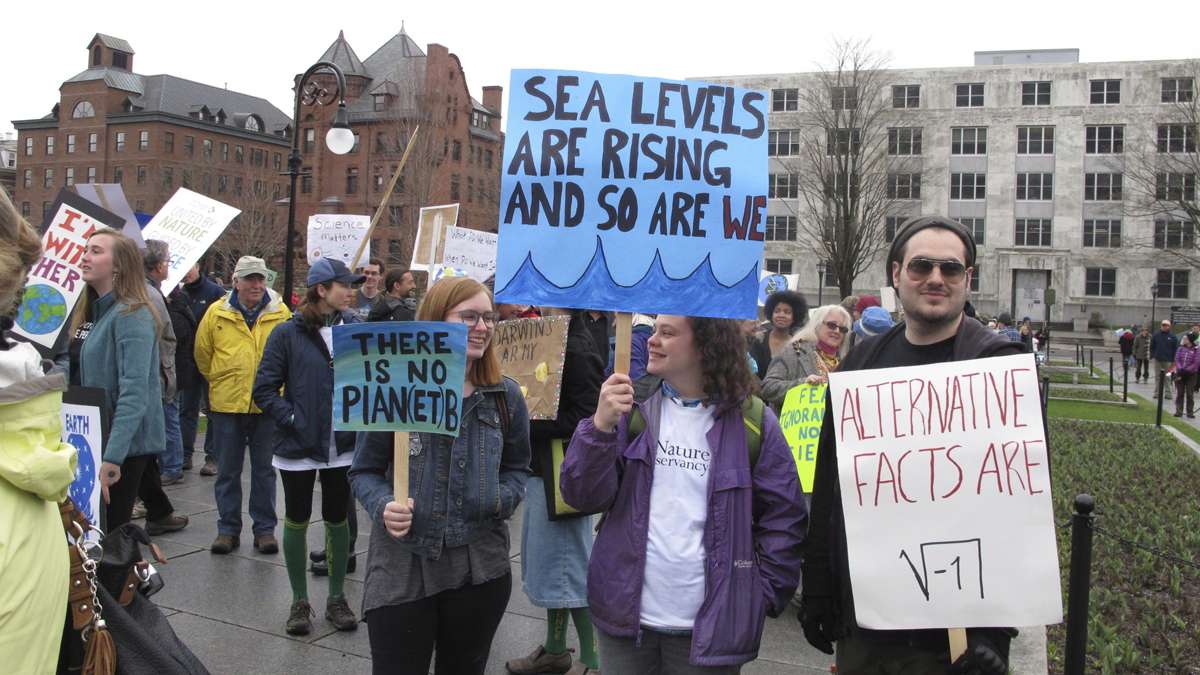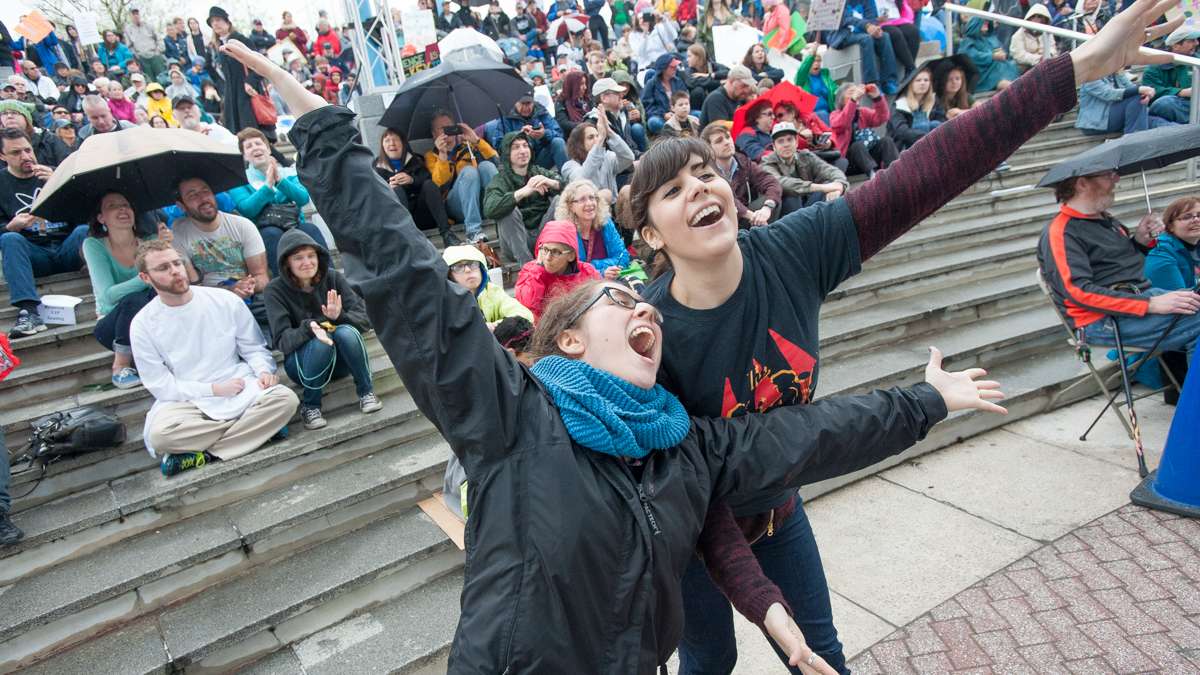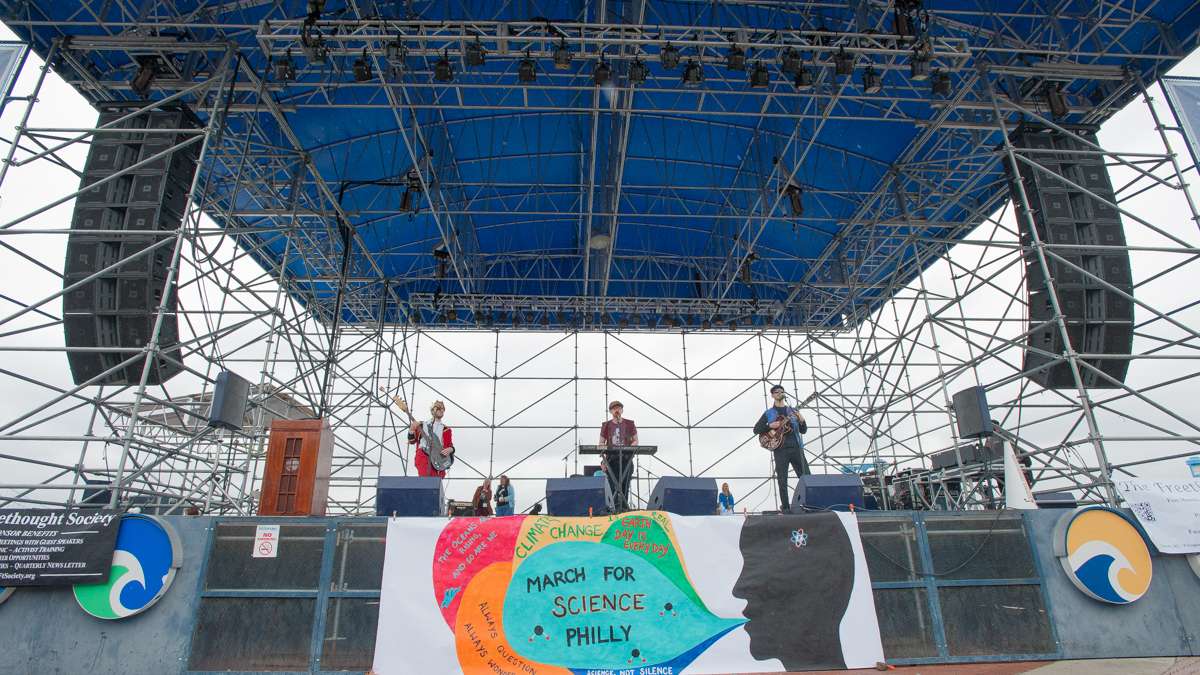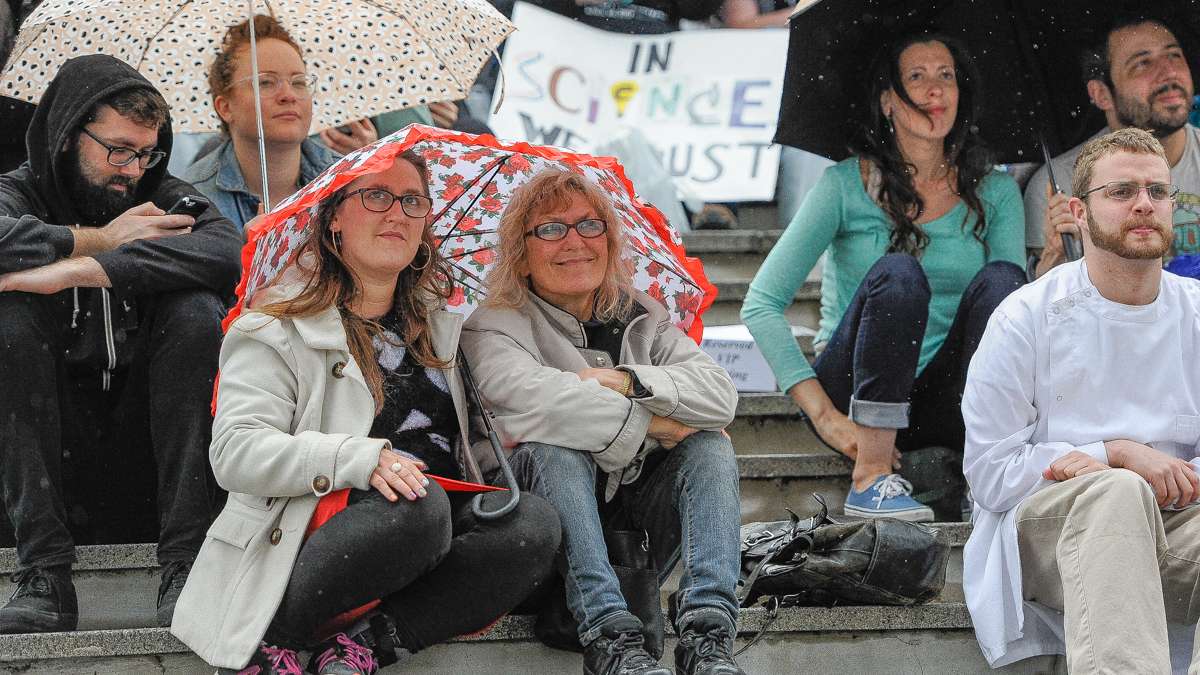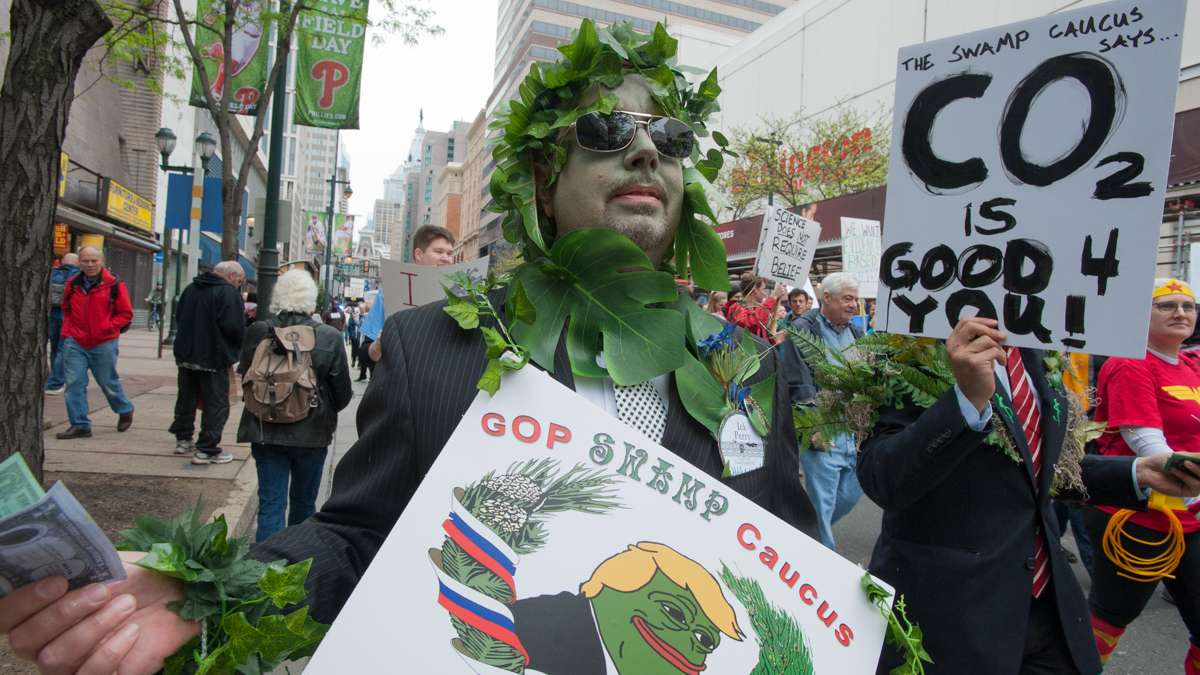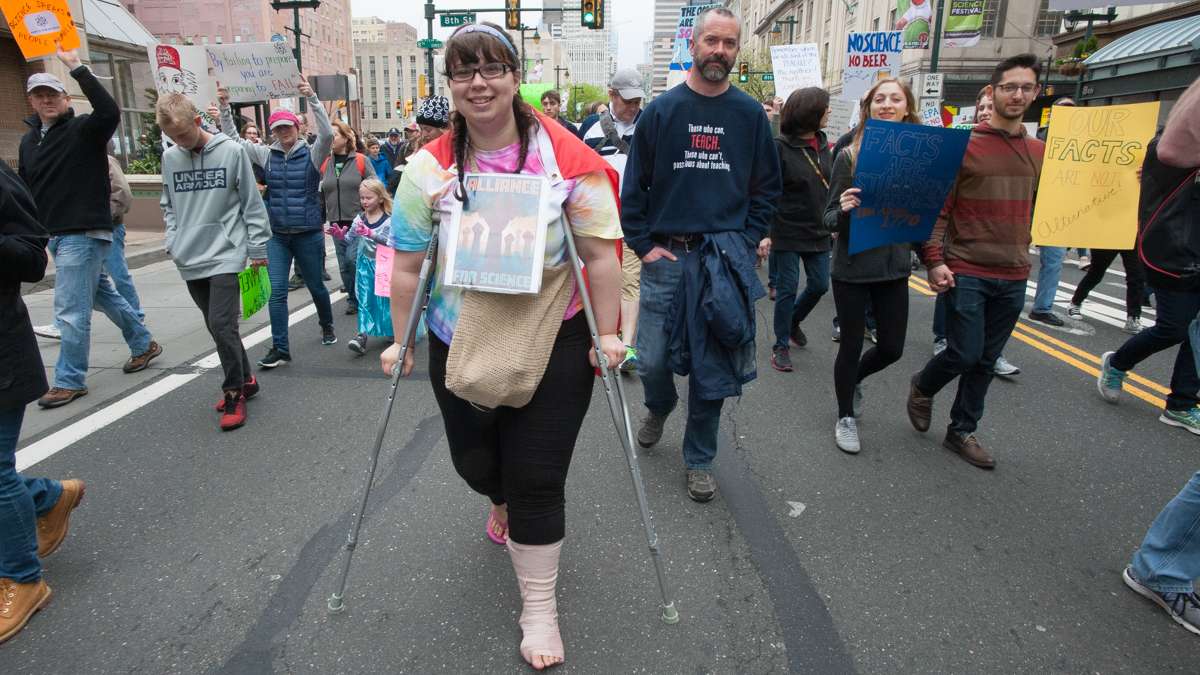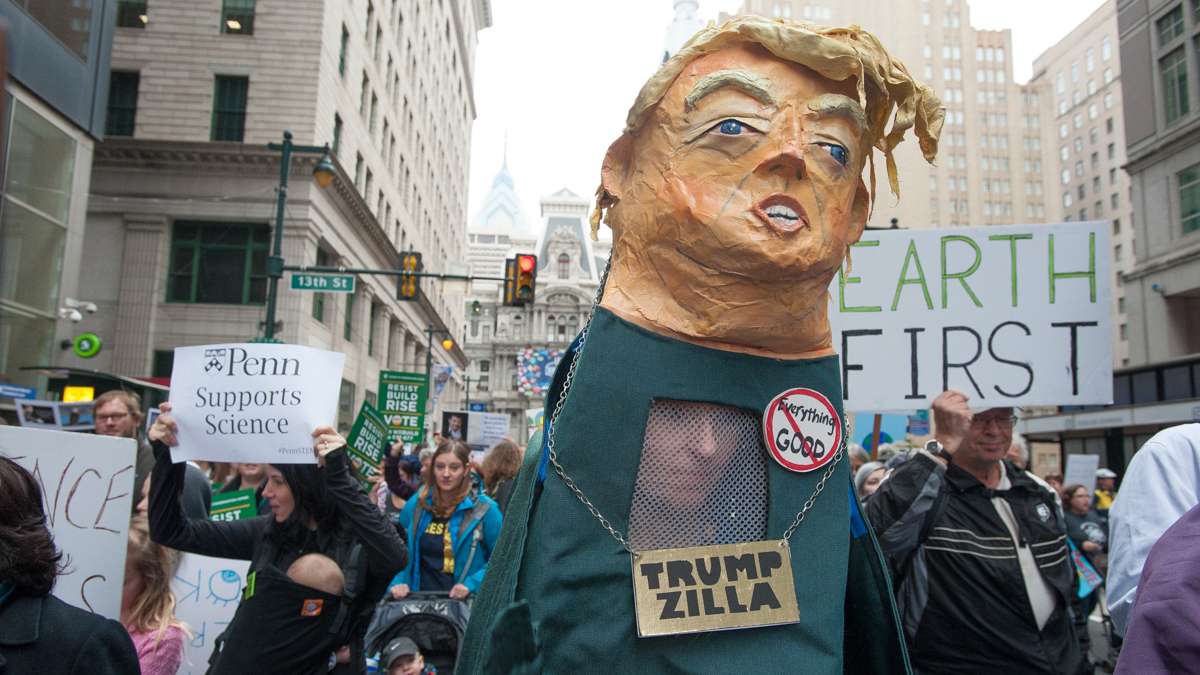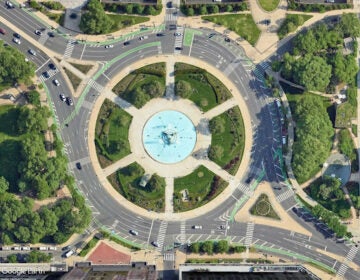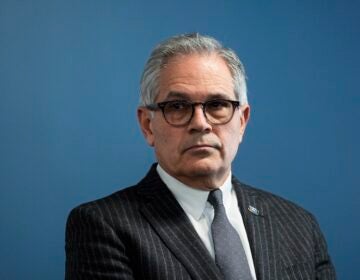Thousands ‘March for Science’ in Philly and across the nation [photos]
Thousands packed Market Street from City Hall to Penn’s Landing for the Philadelphia Science March. It is one of over 400 marches held in 35 countries to support and celebrate science.
Scientists worldwide left their labs to take to the streets Saturday along with students and research advocates in pushing back against what they say are mounting attacks on science.
The protest put scientists, who generally shy away from advocacy and whose work depends on objective experimentation, into a more public position.
Organizers portrayed the march as political but not partisan, promoting the understanding of science as well as defending it from various attacks, including proposed U.S. government budget cuts under President Donald Trump, such as a 20 percent slice of the National Institute of Health.
In PhiladelphiaThousands packed Market Street from City Hall to Penn’s Landing for the Philadelphia Science March. It is one of over 400 marches held in 35 countries to support and celebrate science.
Chanting “alternative facts have got to go,” and “science not silence,” marchers addressed many intersections of political and scientific life — from internet privacy, to the benefits of vaccines and genetic research, to diversity and inclusion in STEM fields.
Many, like civil engineer Chris Donahue, focused on climate change. Donahey says he is worried about how the Trump administration policy toward climate change will affect the nation’s infrastructure. Holding a sign quoting the former Naval Chief Johnathan Greenert that defines climate change as a national security issue, he said, “We just need more common sense people to help us plan for the future and not deny something that we know is coming. We’re just going to make it worse by procrastinating and blaming others.”
Eric Abrams, a student from Cherry Hill, New Jersey, attended the march with two friends. They helped start an Environmental Club at their school this year. They say the club is small — but their commitment to informing others about climate change is strong. “I think part of the problem is that people don’t care. And that when people finally do start caring it might be too late,” he said.
In his address to the crowd, Greg Vitali (D, Delware) said that every year Pennsylvania produces one percent the world’s greenhouse gasses and is the second largest producer of natural gas in the country. “We are a very important battleground for the environment,” he said. Addressing scientists, he added “Staying silent is a luxury we can’t afford any longer.”
Makiri Sei came representing malacologists, scientists who study mollusks. She works for the Academy of Natural Sciences and says the plan to cut National Science Foundation funding has direct implications for her job. “[The NSF] funds our expeditions, our scientific inquiries, and also the upkeep of our collection,” said Sei. “Outrage is not really my strength- I would much rather be hiding in the lab but I always wish I could do more, even though it’s not really my thing.”
Not everyone came with a political message, however.
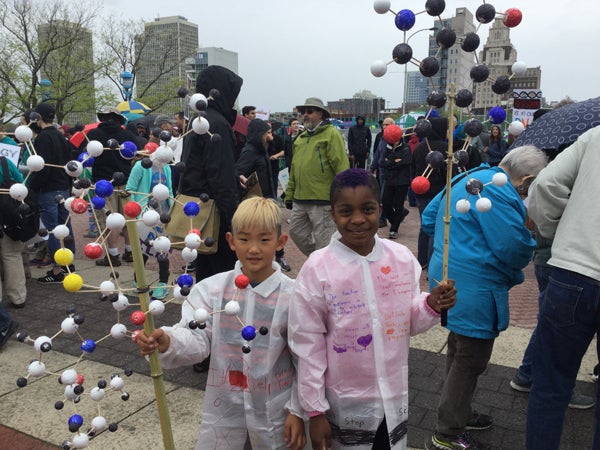 Bela and Claudia Collins hold homemade models of oxytocin and melanin. (Kyrie Greenberg for NewsWorks)
Bela and Claudia Collins hold homemade models of oxytocin and melanin. (Kyrie Greenberg for NewsWorks)
Siblings Bela and Claudia Collins came with models of molecules of oxytocin and melanin that they made out of craft sticks and foam, and shared facts they have researched about the molecules. Their older brother Tucker is graduating from Drexel University with a degree in neurochemistry. When the National Institutes of Health BRAIN initiative started last year, he said he thought it seemed like a good time to be in the neuroscience field. “But now,” he said, “with the changes in the new administration, we have to fight a lot harder for that to stay the same.”
In Washington, D.C.March attendees who traveled from Philadelphia to the Washington, D.C. march came to bolster the number of people in the capitol.
Linda Robinson, a biology lab coordinator at the University of Pennsylvania, said, “I feel like we might make a difference just by our presence, by outreach, and by just people seeing what we’re doing, and that scientists are real people. It’s all part of it.”
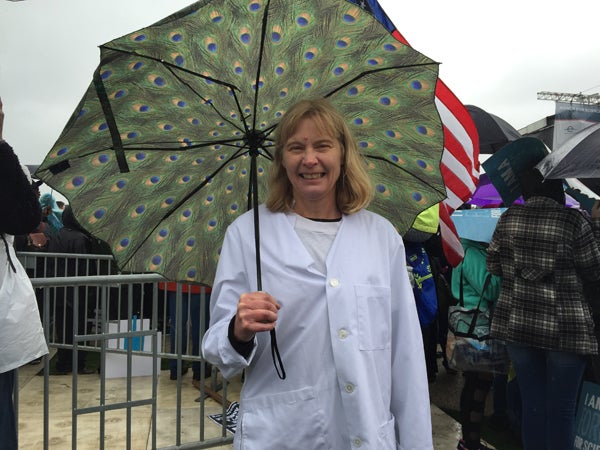 Linda Robinson, a biology lab coordinator at the University of Pennsylvania (Irina Zhorov/WHYY)
Linda Robinson, a biology lab coordinator at the University of Pennsylvania (Irina Zhorov/WHYY)
She said the proposed cuts to the EPA and the NIH drove her to participate. She’d never before been politically involved.
“I’m kind of introvert , I would never doing anything like this. I feel like now is the time, if ever, to do something,” Robinson said. “And I feel really good, like I’m among friends here. Everybody gets my jokes, and I get their jokes, so it’s a lot of fun. I think there are a lot of introverts in science that are now doing more.”
Jesse Humenik, a research technician, also at the University of Pennsylvania, said just showing up was new, and important, for him, too.
“I don’t expect it to accomplish much, but just to show that you know that we’re here, we’re not a small number. There’s a lot of us, you just might not see us because we’re in the labs,” Humenik said.
Gail Horvath, a nurse who works in safety and quality of healthcare services in and around Philadelphia, attended with her sister. “I was at the first Earth Day march 40 years ago and I said to my sister after Vietnam I thought we were done protesting, “ she said. “But we were at the women’s march, I was at the tax march, I was at the immigration protests, and here we are again.”
Across the nationSigns and banners readied for the Washington rally reflected anger, humor and obscure scientific references, such as a 7-year-old’s “No Taxation Without Taxonomy.” Taxonomy is the science of classifying animals, plants and other organisms.
The sign that 9-year-old Sam Klimas held was red, handmade and personal: “Science saved my life.” He had a form of brain cancer and has been healthy for eight years now. His mother, grandmother and brother traveled with him from Parkersburg, West Virginia. “I have to do everything I can to oppose the policies of this administration,” said his grandmother, Susan Sharp.
Scientists involved in the march said they were anxious about political and public rejection of established science such as climate change and the safety of vaccine immunizations.
“Scientists find it appalling that evidence has been crowded out by ideological assertions,” said Rush Holt, a former physicist and Democratic congressman who runs the American Association for the Advancement of Science. “It is not just about Donald Trump, but there is also no question that marchers are saying ‘when the shoe fits.”
Judy Twigg, a public health professor at Virginia Commonwealth University, was aiming one of her signs at the president. The sign showed the periodic table of chemical elements and said: “You’re out of your element Donny (Trump).” For Twigg, who was wearing a T-shirt that said “Science is not a liberal conspiracy,” research is a matter of life and death on issues such as polio and child mortality.
Despite saying the march was not partisan, Holt acknowledged it was only dreamed up at the Women’s March on Washington, a day after Trump’s inauguration on Jan. 20.
“It’s not about the current administration. The truth is we should have been marching for science 30 years ago, 20 years, 10 years ago,” said co-organizer and public health researcher Caroline Weinberg. “The current (political) situation took us from kind of ignoring science to blatantly attacking it. And that seems to be galvanizing people in a way it never has before. … It’s just sort of relentless attacks on science.”
“The scientific method was developed to be nonpartisan and objective,” Weinberg said. “It should be embraced by both parties.”
Christine McEntee, executive director of the American Geophysical Union, a global professional organization of earth and space scientists, cited concerns by scientists and threats to research as a result of elections in the U.S. and other countries.
Threats to science are heightened in Turkey and elsewhere in Europe, said McEntee, who planned to march with geophysical scientists in Vienna, Austria.
Dr. Mona Hanna-Attisha, who exposed the dangerous lead levels in the drinking water and children’s blood in Flint, Michigan, planned to march in Washington and speak to the crowd.
“It’s risky, but that’s when we make advancements when we take risks … for our heart rates to go up, to be a little anxious and scared and uncomfortable,” she said before the event.
Around the worldMarchers in Geneva carried signs that said, “Science — A Candle in the Dark” and “Science is the Answer.” In Berlin, several thousand people participated in a march from the one of the city’s universities to the Brandenburg Gate landmark. “We need to make more of our decision based on facts again and less on emotions,” said Meike Weltin, a doctorate student at an environmental institute near the capital.
In London, physicists, astronomers, biologists and celebrities gathered for a march past the city’s most celebrated research institutions. Supporters carried signs showing images of a double helix and chemical symbols.
WHYY is your source for fact-based, in-depth journalism and information. As a nonprofit organization, we rely on financial support from readers like you. Please give today.



